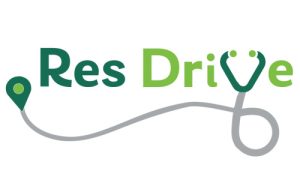PI: Despina Stavrinos, PhD
Funding Sponsor: US Army Ground Vehicle Systems Center
Status: Pre-data collection
Description: Advancing technology provides enormous potential for tasks previously completed by humans to be managed by autonomous systems. The optimal quantity and delivery method of assistance, currently unknown, is critical for successful artificial intelligence (AI) integration into military vehicles.
The overarching objective of this project is to develop an ecologically valid, high-fidelity experimental simulation to assess crew performance and communication under varying levels of AI assistance. The experimental procedure will determine (1) the impact of automated assistance on crew performance, situational awareness, and communication; (2) the minimal accuracy and precision of AI object detection and driving assistance necessary to fully support a ground vehicle crew; and (3) the optimal visual behavior of the commander, lookouts, and support drivers to mitigate risk and enhance driving performance.
Funding Sponsor: Eunice Kennedy Shriver National Institute of Child Health and Human Development (1 R01 HD089998-01)
Status: In Data Analysis
Description: Motor vehicle collisions (MVCs) are the leading cause of morbidity and mortality among adolescents, accounting for approximately one in three deaths among teens ages 16 to 19. The primary contributor to MVCs is driver inattention, which manifests as vulnerability to distraction. Yet, the relative contributions of young age and low driving experience to driving inattention remains unsettled, and the general development of attention over the course of adolescence has received little study. The central hypothesis of this study is that driving attention and driving outcomes are predicted by age and driving experience through improvements in underlying cognitive mechanisms (general attention, speed of processing, and executive function). The long-term goal of the research program is to explain the etiology of adolescent motor vehicle crash risk and translate findings to evidence-based interventions.
In this longitudinal study, 220 adolescents will be enrolled across four groups of 55: 16 and 18-year-olds with and without driving experience. The adolescents will perform general and driving-based attention tasks, as well as cognitive function tasks at seven time points over 18 months. The combination of factorial and longitudinal designs will permit study of both the independent and joint effects of age and driving experience on driving attention over time. Multiple methods will be used to measure driving outcomes, including driving in a high-fidelity driving simulator, self-report, and state crash records. Driving attention in the simulator will also be examined under several distraction conditions because the presence of distractions challenges attention and is an important factor in MVC risk. Novel in-vehicle eye-tracking methodologies will track changes in driving attention development over 18 months.
Four Specific Aims are proposed. Aim 1: Characterize the trajectory of driving attention development as a function of age and driving experience. Aim 2: Characterize the roles of age and driving experience in driving attention under varying levels of distraction. Aim 3: Examine the roles of underlying cognitive mechanisms (general attention, speed of processing, executive function) in driving attention development as a function of age and driving experience. Aim 4: Investigate how driving-specific attention development impacts driving outcomes. MVCs are burdensome and costly to society. With inattention as the primary contributor to MVCs, it is critical to gain a clearer understanding of how driving attention develops during the riskiest developmental period for drivers: adolescence (ages 16 to 18).
The findings of the proposed study have the potential to reduce MVCs by (a) shaping policy regarding optimal age and experience for licensure and limitations imposed on young drivers and (b) providing targets for interventions to improve public health.
Funding sponsor: Eunice Kennedy Shriver National Institute of Child Health and Human Development
Status: In Data Collection.
Project Summary: Returning to drive after a mild traumatic brain injury (mTBI) is an immediate goal for many individuals as they return to their daily activities. However, evidence-based guidance about when those with mTBI can safely return to drive is lacking. While an mTBI can lead to significant cognitive and functional impairments, little is known about how mTBI affects driving, especially among teen drivers who are at an increased risk of both mTBI and motor vehicle collisions compared to other age groups. The long-term goal of this research is to evaluate the effects of mTBI on teens’ driving performance and inform clinical practice guidelines on when teens can safely return to drive post-mTBI and under what conditions.
We will test the following specific aims: Aim1: Characterize the trajectory of driving from acutely post-injury to symptom resolution among teen drivers with mTBI compared to healthy controls. Aim 2: Examine the effect of cognitive load on driving performance from acutely post-injury to symptom resolution in teen drivers with mTBI compared to healthy controls. Aim 3: Examine the extent to which differences in driving performance between teen drivers with and without mTBI, especially under increased cognitive load, are mediated by acute post-injury neurocognitive function. We will enroll 200 teen drivers ages 16-19 years from two study sites to increase racial, geographic, and socioeconomic diversity. Participants will include 100 teen drivers (50 per site) with a physician-confirmed isolated mTBI and 100 (50 per site) healthy controls with no history of TBI matched for age, sex, driving experience, and athlete status.
Primary driving outcomes will be assessed using two innovative, complementary approaches: 1) high-fidelity driving simulators will be used to assess driving performance under 4 experimental study conditions at up to 9 time points: acutely post-injury (≤ 96 hours of injury) and then weekly until symptom resolution or 8 weeks post-injury, whichever occurs first; 2) self-report surveys of real-world driving behaviors will be completed by all participants daily. This is the first study to longitudinally evaluate teen driving after mTBI from acutely post-injury to symptom resolution. The study will fill critical gaps by providing evidence on how increased cognitive load and underlying neurocognitive function post-injury may impact driving performance. Our results will have a significant impact on clinical practice and guidelines by providing evidence to inform the development of clinical return to drive guidelines and to help healthcare providers make informed clinical recommendations regarding when a teen can safely return to drive after mTBI.
PI: Stavrinos
Status: In Data Analysis
Overview: AUTOSPAN is a study examining the perceptions of autonomous vehicle (AV) technologies and performance with a completely self-driving system among teenagers and their parents.
Background: As advances in automated systems bring the widespread use of AVs closer to reality, relevant human issues must be examined. Autonomous vehicles have the potential to increase the mobility of older, injured, or disabled drivers; provide safe transportation for drowsy, intoxicated, or otherwise cognitively impaired individuals; and eliminate potential human errors in several other contexts. For the introduction of AVs (especially those at the fully self-driving level) to be successful in real-world driving environments, autonomous technology will need to be capable of predicting and negotiating with the movements and intentions of human drivers, and, in turn, users will need to understand the limitations of autonomous technology.
Self-report data indicate that AV technology is generally trusted and accepted by drivers, with some variability in attitudes regarding the more advanced levels 3 and 4 autonomous systems. A certain level of trust in AVs is desirable; however, excess trust can lead to overreliance on fallible technology. In simulated and actual driving environments, drivers of AVs have exhibited willingness to engage in secondary activities (such as mobile phone use, watching videos, and talking to researchers) when “autopilot” mode is active, resulting in poorer reaction times during system failures and/or the presentation of unexpected hazards. In actual driving environments, these poorer reaction times could lead to fatal outcomes.
Prior work has been limited in identifying individual difference factors such as cognitive ability, sleep, schedules, and parent-teen interactions and the impact of these factors on the takeover of an AV during an unexpected malfunction. This information is particularly important to understand among pre-drivers whose training may include the operation of an autonomous vehicle.
Study Objectives: The main objectives of this study are (1) to examine the following factors (a) acceptance of autonomous vehicles, (b) trust in autonomous vehicles, (c) cognitive ability, (d) sleep, (e) schedules, and (f) parent-teen interactions and (2) the impact of these factors on ability to safely take over an autonomous vehicle during an unexpected malfunction.
PI: Despina Stavrinos
Co-PI: Dr. Rajesh Kana
Funding Sponsor: Civitan International Research Center 3T MRI Pilot Program
Status: In Data Analysis.
Description: One of the national priorities of the Department of Transportation (DOT) is to improve safety and accessibility for all road users, particularly among vulnerable, special populations. As Director of the Translational Research for Injury Prevention (TRIP) Laboratory, Dr. Stavrinos has devoted her career to understanding how transportation safety is impacted for young individuals with developmental disabilities. Dr. Stavrinos’ work, funded by the DOT, suggests certain cognitive factors (e.g., executive function, speed of processing) increase injury risk among pedestrians with ADHD (Stavrinos et al., 2009) and drivers with ADHD (Garner et al., 2013; Stavrinos et al., 2015).
The current work is being expanded by inclusion of noninvasive neuroimaging techniques hypothesized to enhance the work in two key ways: 1) emulating driving situations in functional MRI could help characterize the allocation of cognitive and neural resources in the context of hazard detection and identify potential differences between the mechanisms underlying hazard detection in individuals with and without developmental disabilities; 2) combining functional neuroimaging with neuropsychological tasks not only permits us to assess correlation between cognitive (e.g., attention) and neural aspects of hazard detection, but also helps us to examine the biological constraint that limits systematic neural response in individuals with developmental disorders; and 3) identifying which patterns of activity relate to different hazard detection strategies confirms that the two groups are adopting different information processing strategies, as opposed to any differences being due to peripheral factors such as vision differences or slowed response times.
Knowledge about these different hazard detection strategies may inform interventions for all drivers.
PI: Benjamin McManus, PhD
Funding Sponsor: Centers for Disease Control and Prevention National Institute for Occupational Health and Safety
Status: In Data Collection
Description: The overall objective of this study is to reduce the costly burden of motor vehicle crashes resulting from irregular and long work hours in healthcare workers by identifying work organization factors contributing to crash risk and to develop mathematical models predicting crash risk as functions of well-being and work organization.
This goal will be achieved by longitudinally characterizing the trajectory of sleep quantity and quality degradation, stress accumulation, and persisting fatigue in a sample of surgical residents over 18 months and the resulting impact on motor vehicle crash risk. Sixty residents (n=60) will be enrolled and assessed over 18 consecutive months (spanning two different years of residency).
The primary outcome of interest is post-shift crash risk estimated via a state-of-the-art driving simulator with eye tracking.




